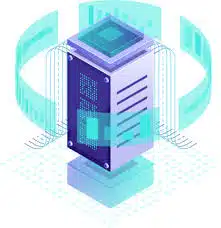-
- Diagnosing NVMe over Fabrics with RDMA in Linux Storage Networks
- Understanding NVMe over Fabrics and RDMA
- Configuration Steps
- Step 1: Install Required Packages
- Step 2: Configure RDMA
- Step 3: Verify RDMA Configuration
- Step 4: Configure NVMe over Fabrics
- Practical Examples
- Best Practices
- Case Studies and Statistics
- Conclusion
Diagnosing NVMe over Fabrics with RDMA in Linux Storage Networks
As data storage needs continue to grow exponentially, the demand for high-performance storage solutions has led to the adoption of NVMe over Fabrics (NoF) with RDMA (Remote Direct Memory Access) in Linux environments. This technology allows for faster data transfer rates and lower latency, making it essential for modern data centers. However, diagnosing issues within these complex systems can be challenging. This guide aims to provide a comprehensive approach to diagnosing NVMe over Fabrics with RDMA in Linux storage networks, ensuring optimal performance and reliability.
Understanding NVMe over Fabrics and RDMA
NVMe over Fabrics extends the NVMe protocol beyond the confines of a single server, allowing multiple servers to access shared storage over a network. RDMA enhances this by enabling direct memory access from one computer to another without involving the CPU, which significantly reduces latency and CPU overhead.
Configuration Steps
Step 1: Install Required Packages
Before diagnosing NVMe over Fabrics, ensure that the necessary packages are installed on your Linux system. Use the following command:
sudo apt-get install nvme-cli RDMA-coreStep 2: Configure RDMA
To set up RDMA, you need to configure the InfiniBand or RoCE (RDMA over Converged Ethernet) interfaces. Edit the configuration file:
sudo nano /etc/RDMA/RDMA.confEnsure the following parameters are set:
- Device: Specify the RDMA device (e.g., ib0 for InfiniBand).
- Transport: Set to ‘ib’ for InfiniBand or ‘roce’ for Ethernet.
Step 3: Verify RDMA Configuration
Use the following command to verify that RDMA is configured correctly:
ibstatThis command should return the status of your RDMA devices. If the devices are not listed, check your hardware connections and drivers.
Step 4: Configure NVMe over Fabrics
To configure NVMe over Fabrics, you need to set up the NVMe target and initiator. Use the following commands:
sudo nvme connect -t RDMA -n -a -s Replace , , and with your specific values.
Practical Examples
Consider a scenario where a data center is experiencing high latency in storage access. By following the configuration steps outlined above, the IT team can diagnose the issue by checking RDMA connectivity and NVMe target status. For instance:
nvme listThis command lists all NVMe devices connected to the system. If the expected devices are not listed, further investigation into the RDMA configuration is warranted.
Best Practices
- Regularly update your Linux kernel and NVMe drivers to ensure compatibility and performance improvements.
- Monitor RDMA performance metrics using tools like
ibstatandibv_devinfo. - Implement redundancy in your RDMA setup to avoid single points of failure.
- Utilize QoS (Quality of Service) settings to prioritize critical workloads over the network.
Case Studies and Statistics
A study by the Storage Networking Industry Association (SNIA) found that organizations implementing NVMe over Fabrics with RDMA reported up to a 50% reduction in latency compared to traditional storage protocols. Additionally, a case study from a leading cloud service provider demonstrated that transitioning to NVMe over Fabrics resulted in a 30% increase in throughput for their storage systems.
Conclusion
Diagnosing NVMe over Fabrics with RDMA in Linux storage networks is crucial for maintaining high performance and reliability in modern data centers. By following the configuration steps outlined in this guide, utilizing best practices, and learning from real-world examples, IT professionals can effectively troubleshoot and optimize their storage solutions. Regular monitoring and updates will ensure that your systems remain efficient and capable of meeting the growing demands of data storage.
